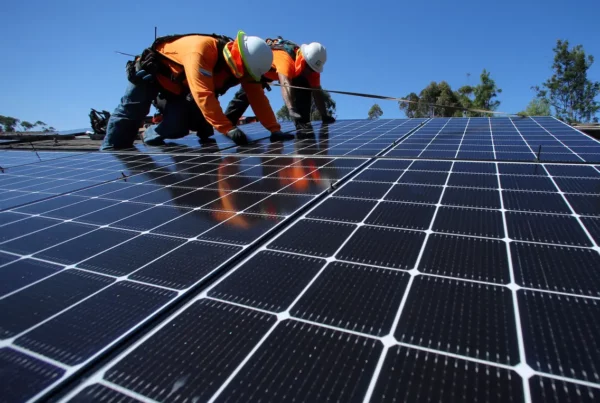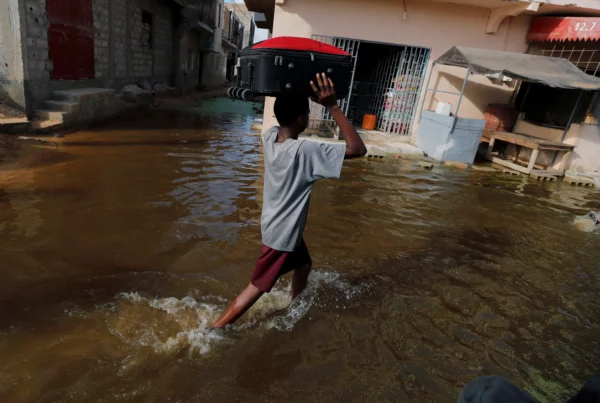This year’s UN climate summit must get climate finance flowing from wealthy countries to those most impacted by the climate crisis. Success rests on whether funds are mobilized at the pace and scale required to tackle the intensifying impacts of a heating planet.
COP27 – taking place 6th-18th of November in Sharm El-Sheikh, Egypt – follows a year of compounding climate disasters, including droughts, floods and locust invasions. Meanwhile, the effects of the COVID-19 pandemic and the global food and fuel price crisis are inhibiting countries’ ability to rebuild and recover.
Developing countries need finance to adapt and build resilience to climate change, phase out fossil fuel use and develop sustainably. However, rich nations are failing to mobilise their promised US$100 billion per year in climate finance, due from 2020. At COP27, countries must unlock this finance and raise ambition to meet the growing needs of the climate crisis.
What is climate finance?
Climate finance is the transfer of public and private money to developing countries designed to tackle the causes and impacts of climate change. It includes a variety of financial instruments, such as investments, loans, grants and insurance.
Increasingly, developing nations are calling for loss and damage finance to help them recover from sustained climate impacts. This includes floods, droughts and storms, as well as emission reduction assistance.
Climate finance is different to green finance, which refers to investments that support a sustainable, low-emissions economy. This can include reducing emissions and pollution and improving resource efficiency. Green finance mostly comes in the form of green bonds.
The need for climate finance is growing
Worsening climate change impacts are shaking global economic security. Despite years of negotiations and promises, climate finance has yet to sufficiently meet the needs of intensifying impacts and catalyse the shift away from fossil fuels.
As of 2020, wealthy nations had mobilised US$83.3 billion per year in climate finance. However, even the promised US$100 billion falls far short. Last year, African climate negotiators said that developing countries need US$1.3 trillion annually by 2030. Moreover, financing less than half of developing nation’s climate plans under the Paris Agreement will require almost US$6 trillion up to 2030.
To make matters worse, many emerging and developing economies face immense debts and debilitating interest rates. The least developed countries spent 14% on average of their domestic revenue on interest payments in the last decade, compared with just 3.5% in developed countries. This inhibits their ability to invest in public services and worsens their credit ratings, making it difficult to attract foreign investments. It also means countries in the global south currently spend five times more on debt repayments than climate crisis impacts. This situation cannot continue.
How COP27 can deliver on climate finance
There are a number of obstacles hindering the delivery and effectiveness of climate finance. These must be addressed for a successful COP27.
- Meeting and increasing the annual US$100 billion funding promise. The UK COP26 presidency published a finance delivery plan last year. It concludes that developed countries could meet this promise by 2023 and ramp it up from 2025. Failure to show progress could fuel tensions between richer and developing countries at COP27.
- Tackling the debt burden as a priority. Egypt’s COP27 presidency intends to drive conversations about solutions to debt. These could include shifting away from loans and towards grants, and restructuring and reducing debt for the most at-risk countries. One approach shows debt relief could free up US$400 billion for climate and nature, while another could relieve debt via debt-for-nature swaps.
- Making climate finance more transparent. Egypt says COP27 must help to enhance the transparency of financial flows while facilitating access to African and least-developed countries. Progression towards the US$100 billion pledge would build trust by demonstrating commitments are being realised, says the presidency.
- Delivering climate finance more effectively. Currently, finance is often channelled through aid and export promotion agencies, corporations, private banks or multilateral institutions. The result is recipient countries have little say in the finance they are receiving. Donor countries must better consider recipent needs, with investments designed for long-term capacity building and job creation.
Further funding available for resilience against ‘external shocks’
In addition to these global climate finance commitments, this year, the International Monetary Fund established the Resilience and Sustainability Trust, equivalent to about US$650 billion. This funding is designed to help countries build resilience to external shocks. These include climate change and pandemic preparedness, while ensuring sustainable growth.





